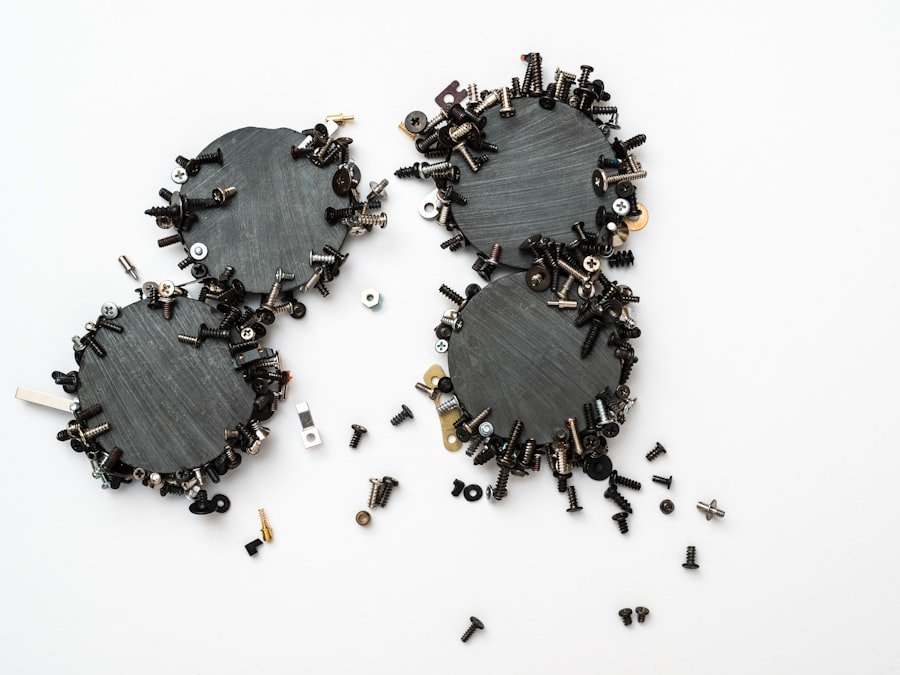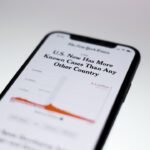The market for broken iPhones has evolved significantly over the past decade, driven by the rapid pace of technological advancement and the increasing demand for sustainable practices. As new models are released, older versions become less desirable, yet they still hold value, particularly for parts or repair. The market is characterized by a diverse range of buyers, including individual repair technicians, refurbishing companies, and even large-scale electronic recycling firms.
Each of these entities has different motivations for purchasing broken devices, which can influence the overall market dynamics. In recent years, the trend of repairing rather than replacing has gained traction among consumers. This shift is partly due to the rising costs of new smartphones and a growing awareness of environmental issues associated with electronic waste.
As a result, many people are looking to sell their broken iPhones instead of discarding them. This has led to a burgeoning secondary market where broken devices can be sold for parts or refurbished for resale. Understanding this market is crucial for anyone looking to sell a broken iPhone, as it can help sellers set realistic expectations regarding pricing and potential buyers.
Key Takeaways
- Understanding the market for broken iPhones:
- There is a growing market for broken iPhones, with demand for parts and repairable devices.
- Factors that influence the value of a broken iPhone:
- The model, age, and condition of the iPhone, as well as the extent of the damage, all influence its value.
- Where to sell your broken iPhone:
- Online marketplaces, trade-in programs, and repair shops are all potential options for selling a broken iPhone.
- Tips for maximizing the value of your broken iPhone:
- Providing an accurate description of the damage and including accessories can help maximize the value of your broken iPhone.
- Selling options for different types of damage:
- Different types of damage, such as a cracked screen or water damage, may have different selling options and values.
- How to properly describe the condition of your broken iPhone:
- Accurately describe the extent of the damage, including any functional issues and cosmetic damage.
- Legal and safety considerations when selling a broken iPhone:
- Be aware of any legal requirements for selling electronic devices and take safety precautions when meeting potential buyers.
- The importance of properly erasing data from your broken iPhone:
- Safeguard your personal information by properly erasing data from your broken iPhone before selling it.
- Common scams to avoid when selling a broken iPhone:
- Be cautious of potential scams, such as fake buyers or fraudulent payment methods, when selling a broken iPhone.
- Environmental impact of selling a broken iPhone:
- Selling or recycling a broken iPhone can help reduce electronic waste and minimize environmental impact.
- Resources for repairing or recycling your broken iPhone:
- There are resources available for repairing or recycling your broken iPhone, including repair services and electronic recycling programs.
Factors that Influence the Value of a Broken iPhone
Several factors play a critical role in determining the value of a broken iPhone. One of the most significant is the model of the device. Newer models typically command higher prices, even in a broken state, due to their demand for parts and repair.
For instance, an iPhone 13 with a cracked screen may still be worth more than an iPhone 7 with similar damage simply because of its newer technology and features. Additionally, the availability of parts for specific models can also affect value; if parts are scarce for a particular model, it may drive up the price. The extent and type of damage are also crucial considerations.
A device with a shattered screen may still function perfectly in terms of internal components, making it more valuable than one that has water damage or a malfunctioning battery. Buyers will often assess whether the device can be repaired easily or if it requires extensive work, which can significantly impact its resale value. Furthermore, the overall condition of the device, including any cosmetic wear and tear, can also influence how much a seller can expect to receive.
Where to Sell Your Broken iPhone

When it comes to selling a broken iPhone, there are several avenues available to sellers. Online marketplaces such as eBay and Craigslist offer platforms where individuals can list their devices for sale directly to consumers. These platforms allow sellers to set their prices and negotiate with potential buyers, which can lead to higher returns if the seller is knowledgeable about their device’s value.
However, selling through these channels often requires more effort in terms of listing the item, communicating with buyers, and handling shipping. Alternatively, there are specialized websites and services that focus on buying broken electronics. Companies like Gazelle and Decluttr provide an easy way for sellers to get an instant quote based on their device’s condition.
These services often streamline the selling process by offering prepaid shipping labels and quick payment once the device is received and assessed. While these companies may offer lower prices than individual sales through marketplaces, they provide convenience and peace of mind for those who prefer a hassle-free experience.
Tips for Maximizing the Value of Your Broken iPhone
| Tip | Description |
|---|---|
| Research Market Value | Check online marketplaces to determine the current value of your broken iPhone model. |
| Compare Trade-in Offers | Explore trade-in options from different retailers and choose the one offering the best value. |
| Sell for Parts | Consider selling individual parts of the broken iPhone, such as the screen or camera, for potential value. |
| Repair Before Selling | If the cost of repair is lower than the potential increase in value, consider fixing the broken iPhone before selling it. |
| Protect Personal Data | Ensure all personal data is wiped from the broken iPhone before selling or trading it in. |
To maximize the value of a broken iPhone, sellers should take several proactive steps before listing their device for sale. First and foremost, it is essential to clean the device thoroughly. Removing any dirt or grime can make a significant difference in how potential buyers perceive its condition.
A clean device not only looks more appealing but also suggests that it has been well cared for, which can positively influence offers. Another important tip is to gather all relevant accessories and documentation that came with the phone. Original packaging, chargers, and manuals can enhance the perceived value of the device.
Additionally, providing clear and high-quality photographs in listings can help attract more buyers. Potential purchasers are more likely to engage with listings that feature detailed images showcasing both the damage and any included accessories. Lastly, being transparent about the device’s condition and any issues it has will build trust with potential buyers and may lead to better offers.
Selling Options for Different Types of Damage
The type of damage on a broken iPhone can dictate the best selling options available to the seller. For example, if an iPhone has a cracked screen but is otherwise fully functional, it may be best suited for resale on platforms like eBay or through local classifieds where buyers are looking specifically for devices they can repair themselves. In such cases, sellers can highlight the working components in their listings to attract repair enthusiasts.
Conversely, if an iPhone has suffered extensive damage—such as water exposure or internal hardware failure—selling it for parts may be more advantageous. In this scenario, specialized electronic recycling companies or parts resellers may offer better prices than general marketplaces. These businesses often have established networks for sourcing specific components from damaged devices and may be willing to pay a premium for phones that can be disassembled for parts.
How to Properly Describe the Condition of Your Broken iPhone

Cosmetic and Functional Issues
Sellers should provide detailed descriptions that include information about both cosmetic and functional issues. For instance, if there are scratches on the body or screen cracks, these should be noted explicitly along with any impact on usability—such as whether the touchscreen still responds properly.
Beyond Physical Damage
Additionally, sellers should mention any known issues beyond physical damage. If the battery drains quickly or if there are problems with connectivity (like Wi-Fi or Bluetooth), these details should be included in the description as well.
Transparency and Honesty
Transparency is key; potential buyers appreciate honesty about what they are purchasing, which can lead to fewer disputes after the sale is completed.
Legal and Safety Considerations when Selling a Broken iPhone
When selling a broken iPhone, there are several legal and safety considerations that sellers should keep in mind. One primary concern is ensuring that the device is not stolen or reported lost. Selling stolen property is illegal and can lead to serious legal repercussions for the seller.
To avoid this issue, sellers should verify that they are the rightful owners of the device and consider checking its IMEI number against databases that track stolen phones. Another important consideration is data privacy. Even if an iPhone is broken, it may still contain sensitive personal information that could be accessed by someone who acquires it.
Sellers should take steps to erase all data from their devices before selling them. This includes performing a factory reset and removing any associated accounts (such as Apple ID) to prevent unauthorized access.
The Importance of Properly Erasing Data from Your Broken iPhone
Properly erasing data from a broken iPhone is crucial not only for protecting personal information but also for complying with privacy regulations that govern data protection. Even if a device is non-functional, remnants of personal data could potentially be recovered by someone with technical expertise. Therefore, before selling or recycling an iPhone, sellers should ensure that all data is wiped clean.
To erase data from an iPhone, sellers should attempt to perform a factory reset through the settings menu if possible. If the device is too damaged to access settings, using recovery mode via iTunes or Finder on a computer can also facilitate data erasure. It’s essential to remove any linked accounts as well; this includes signing out of iCloud and disabling features like Find My iPhone to ensure that the device is no longer associated with the seller’s Apple ID.
Common Scams to Avoid when Selling a Broken iPhone
As with any online transaction, selling a broken iPhone comes with its share of potential scams that sellers should be vigilant against. One common scam involves buyers who offer payment through unconventional methods or request personal information under false pretenses. For instance, some scammers may ask sellers to provide their bank account details or other sensitive information in exchange for payment—this should always raise red flags.
Another prevalent scam occurs when buyers request that sellers ship their devices before payment is made. In such cases, sellers may find themselves without their device and without payment if the buyer turns out to be fraudulent. To mitigate these risks, sellers should always use secure payment methods and consider meeting buyers in person in safe public locations when possible.
Environmental Impact of Selling a Broken iPhone
Selling a broken iPhone rather than discarding it contributes positively to environmental sustainability efforts by reducing electronic waste (e-waste). E-waste is one of the fastest-growing waste streams globally, posing significant environmental hazards due to toxic materials found in electronic devices. By selling broken devices for repair or parts reuse, sellers help extend the lifecycle of electronic products and minimize their ecological footprint.
Moreover, many companies that specialize in buying broken electronics often have recycling programs in place that ensure components are disposed of responsibly or repurposed effectively. This not only helps reduce landfill waste but also promotes resource conservation by allowing valuable materials like metals and plastics to be recovered and reused in new products.
Resources for Repairing or Recycling Your Broken iPhone
For those who choose not to sell their broken iPhones but instead wish to repair or recycle them, numerous resources are available. Local repair shops often provide services ranging from screen replacements to battery repairs at competitive prices compared to manufacturer services. Many independent technicians have developed expertise in repairing various models and can often fix issues quickly.
If recycling is preferred over repair, numerous organizations focus on responsible e-waste disposal. Companies like Call2Recycle offer programs specifically designed for recycling electronics safely while ensuring compliance with environmental regulations. Additionally, Apple itself has initiatives such as its Trade In program where customers can return old devices—broken or not—for recycling or refurbishment purposes while receiving credit towards new purchases.
In conclusion, understanding the market dynamics surrounding broken iPhones allows sellers to navigate their options effectively while maximizing value through informed decisions about repairs or sales channels. By considering factors such as damage type and condition description alongside legal considerations regarding data privacy and ownership verification, individuals can engage in responsible selling practices that benefit both themselves and the environment.
FAQs
What are broken iPhones?
Broken iPhones refer to iPhones that have physical damage, such as a cracked screen, water damage, or other issues that affect their functionality.
Who buys broken iPhones?
There are various options for selling broken iPhones, including online marketplaces, electronics buyback companies, and local repair shops.
Can I sell my broken iPhone for cash?
Yes, there are many companies and individuals who are willing to buy broken iPhones for cash. You can sell them online or to local electronics buyback stores.
How much can I get for a broken iPhone?
The amount you can get for a broken iPhone depends on the extent of the damage and the model of the iPhone. Generally, newer models and those with less damage will fetch a higher price.
What do buyers do with broken iPhones?
Buyers of broken iPhones may repair and refurbish them for resale, salvage usable parts, or recycle them in an environmentally friendly manner.
Are there any risks involved in selling a broken iPhone?
There are some risks involved in selling a broken iPhone, such as potential scams or receiving a lower offer than expected. It’s important to research and choose a reputable buyer.










